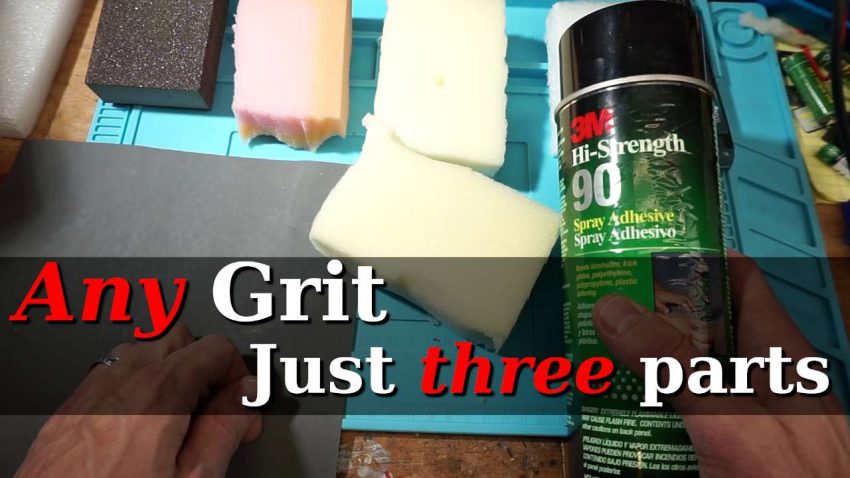Are you sanding down 3D prints? Metal bar-stock or tubes? Wood? A DIY Sanding pad could make a great addition to your toolchest!
When the surface you’re sanding is flat a hand sander or stick with sandpaper tacked in works just fine. But for situations where you’ll be working a rounded surface something more pliable is called for.
Enter the sanding pad or sponge. These are flexible pads with sanding material embedded in the surface. But they take up space on the shelf and the box stores here don’t stock high grit numbers (think 800 grit or 1200 grit).
So what to do? Make your own! While I don’t have 1200 grit sanding pads readily available, I do have 3M adhesive spray, foam, and a full index box of sandpaper.
Choosing DIY Sanding Pad Components
In addition to saving space by re-using already present components DIY sanding pads are a great way to use up odd cuts of sandpaper. Or sandpaper for a device you’re no longer using. Anything that is (or can be cut down to) roughly a hand-fitting shape will do.
3M makes a range of spray-on high tack adhesives suitable for our task. I’ve chosen the 90 Hi-Strength spray. If 3M products aren’t available anything that could be used for automotive upholstery should do.
And for the pads themselves I’ve re-used various shipping packaging and some unused bed foam. The trick to choosing the right foam is to find one that’s just pliable enough for the task at hand.
Creating the Sanding Pads
Laying up the paper and foam was straight forward. I laid out the pads and sandpaper face down, sprayed both sides liberally, then attached and flattened the sandpaper against the foam. With everything pre-cut it went together cleanly.
On a side note, be careful what you’re spraying the foam on. My cutting mat came out a bit worse for the wear and lost some of it’s surface when the foam came off.
And that’s it. There really isn’t too much work involved.
How did the turn out? At the end of the video I went over which foam I liked the best. The denser white packaging foam seemed to be the best compromise between flexibility and durability for the bike tubes.

